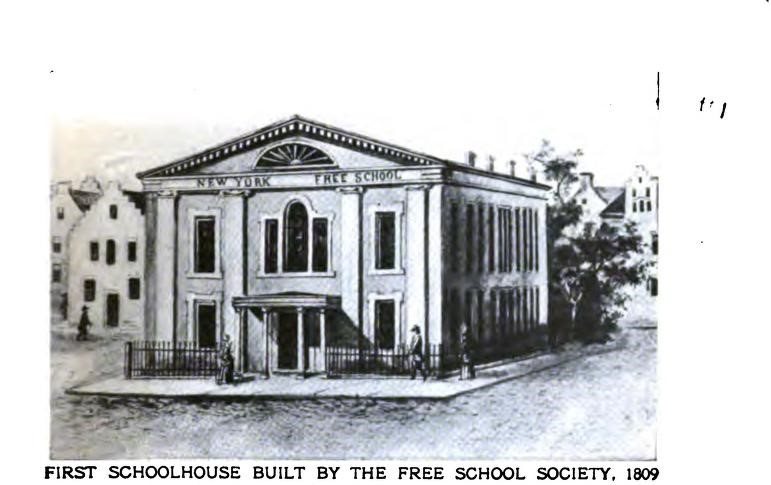First published 10 November 2016
In 1789 Joseph Lancaster opened a non-denominational school in Borough Road, Southwark, London, offering education for all. To cope with the huge numbers of pupils he attracted, he developed the Lancasterian or monitorial system whereby the older, or more advanced, children taught the younger ones. From this one school grew the British and Foreign School Society, thousands of British schools in England, Wales and around the world, and several teacher training colleges including Borough Road College, which became part of the West London Institute in 1976 and Brunel University in 1995.
In the early nineteenth century the city of New York had a population of c. 75 000, constantly being increased by immigration. The social conditions bore a strong similarity to those in Southwark, London, where Lancaster had opened his first school. Education was largely provided by private, church and charity schools. The poorest children were generally not provided for. Some philanthropic residents, including the Governor of New York, DeWitt Clinton, believed that limiting education to the children of gentlemen was “a danger to society”, made more acute by the rapid growth of the city. In 1805 this group formed the New York Free School Society to establish schools open to all at no charge. Its first president was DeWitt Clinton.
The New York legislature incorporated the group but did not provide funding, so the Society depended on subscriptions. Clinton donated $200 of the $6,501 raised in its first year. In 1806 the first New York Free School Society school opened – the first Lancasterian school in the USA. This first school soon came up against the same problem Lancaster had faced in Southwark – how to teach hundreds of pupils on a severely limited budget? After Lancaster's initial success in London, the fame of his system had reached New York and an American edition of his teaching manual Improvements in Education was published early in 1804. Clinton and the Free School Society decided that the Lancasterian system, with its merits of economy and efficiency, was an obvious choice for its schools.
Donations from Colonel Henry Rutgers allowed a second school to open soon after. In exchange for educating the children of the city almshouse, the New York Free School Society was given another building and money for its repair. By 1814, there were almost 800 students being educated in free schools established by the society, and the growth continued in the following decades. The Trustees tried to stick to the original Lancasterian system, and in 1818 they imported a teacher, Charles Pickton, from Borough Road School in London. In 1818 Joseph Lancaster himself visited. Later the shortcomings of the system became more apparent, but at the time there were few alternatives. In 1825 the New York Free School Society became the Public School Society, and in 1853 it was taken over by the Board of Education.
DeWitt Clinton was also president of the Economical School Society – a Lancasterian school for children of refugees from the Napoleonic Wars. He helped found the Orphan Asylum Society, a supporter of the African Free School.
DeWitt Clinton was arguably the most important person in the development of education in New York state in the early 19th C. By the time of his death in 1828, New York state had one of the best school systems in the USA.
He wanted the education of the masses to teach them wisdom and reason, and lead to a responsible exercise of their right to vote.
